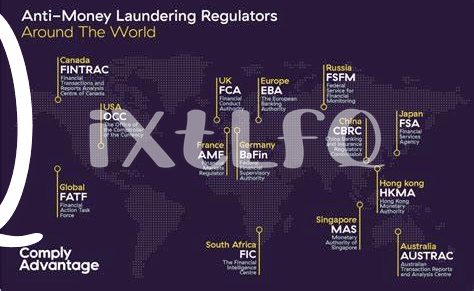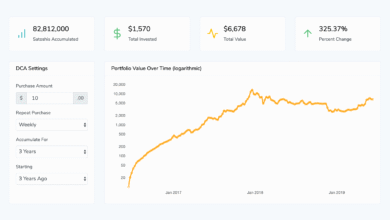Nauru Crypto Regulation: New Authority for Virtual Assets

Nauru crypto regulation is making waves as the tiny island nation takes a significant step towards establishing a robust framework for managing virtual assets. Recently, the government passed a pivotal bill to create the Command Ridge Virtual Asset Authority (CRVAA), tasked with overseeing the burgeoning sector of digital finance. This regulatory body will not only regulate virtual assets and digital banking but also foster Web3 innovation, making Nauru a competitive player in the global digital economy. With the authority responsible for issuing Nauru VASP licenses, it aims to ensure compliance and protect the integrity of the financial ecosystem. As Nauru embraces this transformative approach, it sets the stage for sustainable economic growth and enhanced resilience against financial vulnerabilities.
Recognizing the need for effective governance in emerging digital markets, Nauru has introduced a comprehensive framework for managing cryptocurrencies and similar assets. The establishment of the Command Ridge Virtual Asset Authority (CRVAA) signals the nation’s commitment to virtual asset oversight and digital banking integrity. By issuing licenses for virtual asset service providers (VASPs), this regulatory initiative aligns with global trends in digital finance while fostering innovation in Web3 technology. The proactive stance of Nauru in implementing such regulations showcases its intent to become a regional leader in the evolving landscape of virtual assets. As the island positions itself within this new financial paradigm, it opens avenues for economic diversification and resilience amid environmental challenges.
Understanding Nauru’s Command Ridge Virtual Asset Authority
The Command Ridge Virtual Asset Authority (CRVAA) is a significant milestone for Nauru, establishing a framework for the regulation of virtual assets and digital banking. This regulatory body will ensure that the operations of virtual asset service providers (VASPs) are in compliance with standards that foster financial integrity, security, and innovation. By mandating licenses for VASPs, Nauru aims to create a controlled environment that supports the growth of its digital economy while minimizing risks associated with unregulated practices.
Moreover, the CRVAA is poised to enhance Nauru’s attractiveness as a destination for crypto businesses. The establishment of a dedicated authority not only clarifies the regulatory landscape but also signals the government’s commitment to harnessing Web3 innovation for economic development. This proactive approach can lead to the diversification of revenue streams, helping to build economic resilience in a nation that faces vulnerabilities from both economic fluctuations and climate change.
The Role of VASP Licenses in Nauru’s Economy
As part of the new regulatory framework, the issuance of Virtual Asset Service Provider (VASP) licenses by the CRVAA is a crucial step in positioning Nauru as a competitive player in the rapidly evolving digital asset market. These licenses will ensure that only thoroughly vetted and compliant businesses can offer virtual asset services, thereby fostering trust among investors and users of these services. A transparent and regulated environment is essential in attracting international businesses looking to operate in a reliable jurisdiction.
Furthermore, by controlling the licensing process, Nauru can implement best practices drawn from global standards, which will enhance the overall integrity of its financial system. This initiative supports the broader goal of creating a sustainable digital economy, transforming Nauru from a remote island into a hub of innovation where technology and finance intersect.
Nauru’s Digital Banking Oversight Strategy
Nauru’s innovative approach towards digital banking oversight represents a strategic pivot in its economic policy. By establishing the CRVAA, the island nation is not only embracing digital assets but also reinforcing the regulations surrounding them. This dual approach aims to protect consumers while encouraging financial institutions to explore digital banking options that align with global trends. As digital currencies and blockchain technology gain traction worldwide, Nauru’s regulatory framework positions it as a progressive player in the Pacific region.
In addition to consumer protection, the oversight of digital banking by the CRVAA will implement measures to prevent fraud and maintain market stability. By ensuring that all transactions are monitored and that banks adheres to stringent cybersecurity standards, Nauru demonstrates its commitment to safeguarding its financial future in a digital landscape.
Exploring Web3 Innovation in Nauru
Web3 innovation opens up a pathway for Nauru to leverage decentralized technologies that can boost local entrepreneurship and economic development. By adopting a regulatory framework that supports innovation in this space, the government can attract entrepreneurs and innovators whose ideas can flourish in a stable overseeing environment. This shift not only potentializes new job opportunities but can redefine the financial landscape of the nation.
The CRVAA’s support for Web3 technologies could see Nauru emerge as an incubator for emerging tech startups and projects focusing on blockchain applications. With the right policies in place, Nauru can become a testbed for innovative financial solutions that are tailored to meet local needs while also being scalable for regional and global markets.
Nauru’s Vision for Economic Resilience with Crypto
Nauru’s adoption of a regulatory framework for virtual assets underscores its commitment to enhancing economic resilience. The proactive steps taken by President David Adeang and his government aim to reduce the island’s reliance on volatile climate financing by diversifying revenue streams through digital assets. This initiative is not just about crypto; it’s about future-proofing Nauru’s economy against unpredictable external shocks.
The emphasis on virtual assets within the financial structure can pivot the economy towards increased self-sustainability. By channeling investments into innovative financial instruments such as the Intergenerational Trust Fund, Nauru can leverage its unique geographic positioning and regulatory advantages to attract a diverse range of financial inflows.
Regulatory Implications for Commodities and Securities in Nauru
With the new law recognizing cryptocurrencies as commodities rather than securities, Nauru has taken a crucial step in defining the legal status of virtual assets. This clarity allows businesses and investors to operate with reduced uncertainty, ultimately fostering a more dynamic market. By classifying various tokens—utility, payment, governance, and reward tokens—Nauru is putting a framework in place to prevent their misclassification, ensuring the transparent trading and investment framework.
This classification is essential as it aligns Nauru’s regulations with international best practices in virtual asset regulation, thereby enhancing confidence among international investors. The CRVAA’s ability to enforce these regulations will be vital in ensuring a balanced approach that supports innovation while safeguarding the financial system.
The Importance of Cybersecurity Standards in Virtual Asset Regulation
As the CRVAA takes shape, one of its primary responsibilities will be to uphold cybersecurity standards, which are crucial for the security of virtual assets and the protection of consumers. By implementing robust cybersecurity measures, Nauru aims to protect its fledgling digital economy from cyber threats and attacks that could undermine trust in virtual asset transactions.
Moreover, cybersecurity is not just a matter of financial security but also a critical component of institutional reputation. A strong emphasis on cybersecurity can significantly enhance public trust, encourage wider adoption of digital assets, and position Nauru as a forward-thinking nation in the world of finance.
How Nauru’ VASP Licenses Can Influence Global Crypto Trends
Nauru’s decision to issue VASP licenses could have significant ripple effects beyond its shores, potentially influencing global crypto trends and innovations. As more jurisdictions establish regulatory frameworks for virtual assets, Nauru’s approach could serve as a model for smaller nations looking to stake their claim in the digital asset arena. By doing so, Nauru not only positions itself strategically in the crypto ecosystem but also offers lessons on the importance of regulation in fostering a safe and innovative landscape.
As Nauru begins to issue these licenses, it can attract a cohort of VASPs seeking to operate in a compliant jurisdiction. This will contribute to a more vibrant local economy, and as these businesses succeed, they can help reinforce Nauru’s place on the global crypto stage, showcasing the benefits of embracing innovation through regulatory foresight.
Potential Risks and Challenges in Nauru’s Crypto Regulation
While the establishment of the CRVAA and the regulatory framework it brings is commendable, there are inherent risks and challenges that need to be addressed. The rapid speed of innovation in the blockchain space poses a challenge for regulators trying to keep up with technological advancements. It will be essential for Nauru to remain agile and responsive to changes in the crypto landscape to ensure that their regulations do not become obsolete.
Additionally, the risks involved in cryptocurrency, including volatility and fraudulent schemes, must be mitigated through comprehensive educational programs for both consumers and businesses. Proper knowledge and understanding of the digital asset space are critical in safeguarding investors and ensuring that growth is sustainable. Nauru must tackle these challenges proactively to secure its vision for a robust digital economy.
Frequently Asked Questions
What is the Command Ridge Virtual Asset Authority (CRVAA) in relation to Nauru crypto regulation?
The Command Ridge Virtual Asset Authority (CRVAA) is the newly established regulatory body in Nauru dedicated to overseeing virtual asset regulations, digital banking, and Web3 innovation. It is responsible for issuing licenses to virtual asset service providers (VASPs) and ensuring compliance with cybersecurity standards.
How does Nauru’s crypto regulation affect virtual asset service providers (VASPs)?
Under Nauru’s crypto regulation framework, specifically the CRVAA, VASPs seeking to operate in Nauru must obtain licenses. This regulation aims to enhance financial integrity and promote sustainable growth within the digital asset ecosystem.
What impact does Nauru’s virtual asset regulation have on digital banking oversight?
Nauru’s virtual asset regulation, guided by the CRVAA, encompasses digital banking oversight by enforcing compliance and monitoring financial transactions. This initiative aims to bolster the country’s financial system and attract new investments.
What provisions does Nauru’s crypto law have for Web3 innovation?
Nauru’s crypto law, established by the CRVAA, encourages Web3 innovation by providing a regulatory framework that supports the growth of digital technologies. The law aims to harness virtual assets to diversify the economy and reduce reliance on traditional finances.
What is the significance of the VASP licenses in relation to Nauru crypto regulation?
The issuance of VASP licenses under Nauru’s crypto regulation is significant as it legitimizes virtual asset services within the country. It ensures that providers adhere to regulatory standards, promoting trust and security in the digital asset market.
How does Nauru’s approach to cryptocurrency classify these digital assets?
Under Nauru’s crypto regulation, cryptocurrencies are classified as commodities rather than securities. This classification allows utility and payment tokens to avoid investment contract status, thereby encouraging innovation while protecting investor interests.
What are the goals behind establishing the Command Ridge Virtual Asset Authority in Nauru?
The goals of establishing the CRVAA include strengthening Nauru’s financial integrity, fostering economic resilience, diversifying revenue streams through virtual assets, and reinforcing the country’s position in the global digital economy.
Will Nauru’s regulation support cybersecurity for virtual assets?
Yes, Nauru’s regulation mandates that the CRVAA uphold cybersecurity standards as part of its oversight responsibilities for VASPs, thus ensuring the security and integrity of virtual asset transactions.
How does Nauru’s virtual asset framework compare with other countries?
Nauru’s virtual asset regulation positions it favorably with other countries leading in digital economy developments. The CRVAA’s formation aligns Nauru with global standards, enhancing its competitive edge in attracting investments.
What are the expected benefits of Nauru’s crypto regulation for the local economy?
Nauru’s crypto regulation is expected to bring significant benefits to the local economy by enabling sustainable growth through new financial inflows, enhancing resilience against environmental shocks, and reducing dependence on limited traditional financing.
| Key Points | Details |
|---|---|
| Establishment of CRVAA | Nauru has launched the Command Ridge Virtual Asset Authority (CRVAA) to regulate virtual assets and digital banking. |
| Licenses for VASPs | CRVAA will issue licenses to virtual asset service providers (VASPs) wishing to operate in Nauru. |
| Strategic Advantages | The regulation aims to enhance Nauru’s financial integrity and promote economic resilience by diversifying revenue streams. |
| Legal Framework | Under the law, cryptocurrencies are considered commodities, with specific regulations for utility and reward tokens. |
| Cybersecurity Standards | CRVAA will enforce cybersecurity standards and monitor financial transactions to ensure compliance. |
Summary
Nauru crypto regulation takes a significant step forward with the establishment of the Command Ridge Virtual Asset Authority (CRVAA). This initiative is poised to position Nauru as a leader in the digital asset landscape, aiming to diversify its economy and enhance financial stability. The CRVAA’s regulatory framework underscores the importance of cybersecurity and compliance in the burgeoning world of virtual assets, ensuring that Nauru can effectively harness the potential of this innovative sector. With these developments, Nauru is enhancing its resilience against economic shocks while paving the way for sustainable growth in the cryptocurrency arena.




